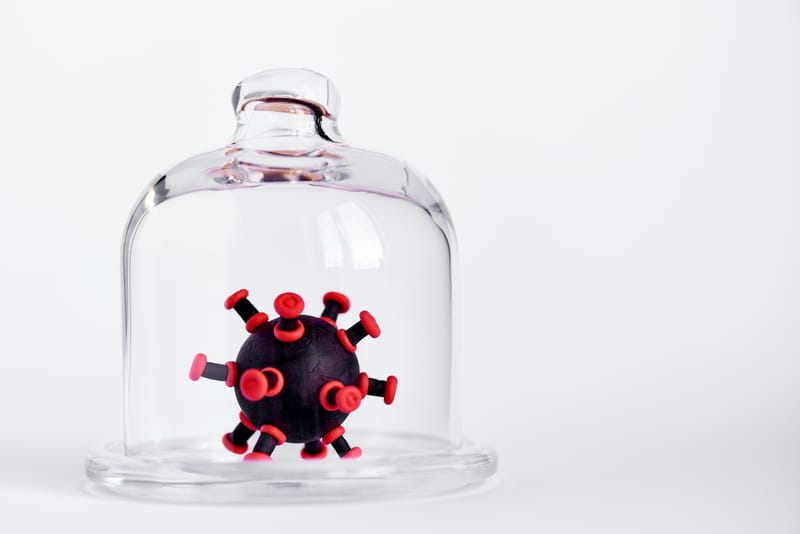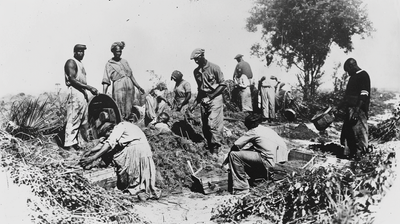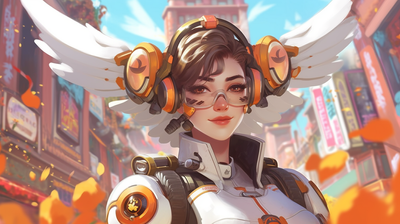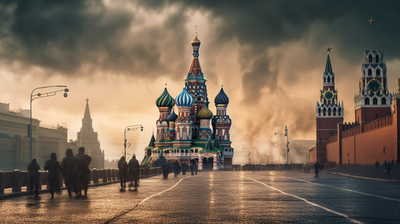This time, three years ago, COVID-19 was just beginning to emerge in China. No one was particularly worried at the time. A few of us news junkies heard about an outbreak, but most of the time, such things stay in China without a greater impact on the rest of the world. In the medical field, rumblings of a strange pneumonia were going around by mid-November 2019. Based on the reports of the “bad cold” going around that winter, my ex-girlfriend and I cancelled much of our holiday plans (both immunocompromised). I was getting ready to release another two books and things were proceeding as normal through the holiday season.
On New Year’s Eve, 2019, Anderson Cooper and Andy Cohen were having their annual party, and they had on Cheri Oteri to parody Barbara Walters saying the phrase, “this is twenty-twenty,” in the same style of Walter’s popular evening news magazine show that aired for decades on ABC. Someone eventually did a mashup of Barbara saying, “this is twenty-twenty.” Little did we all know that this thing called “COVID” was already raging through the country and had been for nearly two months. As the crowd of people milled around waiting for the ball to drop, wearing those gaudy glasses that finally had a year suitable for their design, COVID was spreading among them. In only three months, New York City would be battling the pandemic. New Rochelle would be a quarantined zone and bodies would be piling up outside of hospitals. Soon the shutdowns began and life would never be the same.
But what if I told you that we didn’t need to do that? What if I told you that we didn’t need to shut off the global economy completely in order to stop COVID? In the early days, the world scrambled for a response to the novel virus. No one knew what to do with the increasingly sick and dying patients that threatened to overwhelm the medical system. “Two weeks to flatten the curve” seemed to offer hope that this would soon all be over. But as two weeks dragged into months, it became obvious that nothing was going to release us from the grip of this new and invisible enemy.
COVID, Four Years On
Back in 2019, when the first rumours of a new sickness out of China were first surfacing, we had no idea how much our lives would change. The years of staying inside, masks and more seem like a strange blur for many. However, as the governments of the world eased restrictions, many were not on board with the end of mitigations, despite their unpopularity. Twitter exploded in discourses about this in early 2023.
There is a general feeling of people being abandoned. The government is supposed to be protecting people from this new threat, or so the idea goes, but the fact that most of the world’s governments have given up on managing the pandemic has left people bereft. Most people have stopped masking and gotten used to getting COVID occasionally. For those still trying to avoid the virus, the lack of public protection has become an area of criticism.
But did we need to do that? This is the question I have returned to over again in writing this. I started working on this article early in 2023, and you’ll notice you’re reading it in December. I didn’t have clarity in my thinking about COVID. Much of the mitigations were to stop infection to stop hospitals from being overwhelmed (at least at first), and then later, people were shouting for mitigations to stop infection, reinfection, and Long COVID.
Whether we should or should not be doing mitigations is especially important because of the effects of Long COVID. We are still learning about Long COVID, but stories like these from Canada abound;

The effects of Long COVID are still not being taken seriously as a public health risk. Do we need to think about it in these terms? According to the WHO, 1-10 people who get COVID will have "long" symptoms. That might not seem like much but it adds up quickly. Twitter threads like these by independent journalists have accused the government of not informing people properly and not really taking the threat seriously.
Sick of this angus feaces THERES NO EVIDENCE YOUR GETTING OVER LONG COVID IN A YEAR! SARS1 IS WAY BETTER THAN SARS2 ON BODY YET 10 YRS IN THEY ARE NOT BETTER!!!! U CANT CURE AIDS IT HIDES IN BODY..SO DOES COVID ONLY ITS WORSE! pic.twitter.com/qkYlZb7XVI
— Claire Jennings🇨🇮🇪🇺❤🏳️🌈 (@ClaireJen79) January 12, 2023
While writing this article, I collected videos, twitter data, other data and still more data to try and understand what the hell is going on (pun intended). There are a few narratives and ideas that are worth exploring to bring some clarity to what happened during COVID, where we are now, and where we go from here. Is COVID truly over? Are we still battling COVID? Are we stuck with it forever? Should be try to bring back mitigations? What is the real answers?
AIDS is in the air?
The severity of COVID-19 has always been up for debate. There were two camps of “COVID is the worst thing ever!” and “It’s no big deal, its just a cold.” From the earliest days of 2020, this was a constant debate. Part of this was because of how the disease manifested in people and the different levels of severity. Some people would sail through with very little effect while others’ lives were completely destroyed. In trying to discern the truth of this I discovered an interesting thread about Covid-19 and it being airborne aids.
There is another idea that COVID is essentially airborne aids. This was discussed in the following threads here and here. It was noted that AIDS took years to really have its full and devastating effect. Aids deaths peaked 11 years after the disease was first discovered. Does that mean that we have a future death-bomb on the way? Is COVID the mass-disabling event that some people claim? Shouldn’t this mean that more people should be suffering and dying? Why aren’t excess deaths higher than they are? What does this all mean?
In this video we see more data about excess deaths from things around COVID but not COVID itself. How much are these things related? That is hard to tell.
The Covid Narrative
The public health messaging on COVID was terrible and there has been no accountability of the CDC, Dr. Fauci, Dr. Birx (the scarf lady) and others who did not fairly and properly inform the American public. Public health was more focused on counter-messaging Trump rather than doing the good work of public health.
Once we got through that we then had the vaccine situation. The vaccine rollout messaging was worse, even though Trump couldn’t stop bragging about the speed with which the vaccine was created. Despite the effectiveness of vaccines (and I’ll come back to vaccines), public health officials and doctors on Twitter said that we should still need all the same public health protocols as if we had not vaccinated. This left many people feeling that the vaccine couldn’t be that effective. The lived experience bore this out as the incoming Biden administration promised that the vaccine would end the pandemic and the spread of the virus. As it turns out, the vaccine only stopped people from dying from the virus. It did nothing for the spread. So why was the messaging so bad? Haven’t we faced this kind of thing before?
We could have learned much from HIV/AIDS and how things have grown and changed in the past 40 years. That community has done a great job on harm reduction measures, education, and understanding the virus at a deep level. Before be became such a polarizing, Dr. Anthony Fauci was lauded for having cut his teeth in dealing with that disease and that thanks to that work, we were in good hands. to some degree that was true and a comfort but it also became clear that he was navigating dealing with the Trump administration and also dealing with the novel nature of the virus.
There is the politics of the disease, the vaccine, and the political divide of mitigations like lockdowns and masks. There is also the thread of people who so feared the virus that they divorced, moved, and changed their entire lives to avoid it. It’s not clear that any of that was necessary. We’ll come back to mitigations but for now I want to think about narrative. There was so much news floating around about COVID-19, especially as the pandemic dragged into 2021 and into 2022. What harm came from all of that? Could any of that been prevented?
COVID, Severe Disease, and Long COVID
When I started this article, I was recovering from COVID. I had a solid week of symptoms with another week of recovery. I was not quite able to rest as much as I would like seeing as I launched two major projects with one of my business partners (such is the nature of my work). This time was different. I had COVID without knowing it in 2022. My case was entirely asymptomatic. This time was very different. I was sick. I had picked up the virus from a party I attended. We had tried to be safe. Windows were open and everyone had tested negative to go to the party. However, our precautions did no good. Ultimately, COVID-19 would affect me for the rest of the year with insomnia and fatigue (a deadly conbination) and it would make life very difficult for me. What else were we to do? Simply not have a gathering of any kind?
Long COVID has long-term and deleterious effects on the brain. COVID extends far beyond just the initial respiratory infection. In this study from Nature, we learn that COVID-19 can have acute effects that cause death in other organs. Studies show that COVID-19 damages the immune system for at least 8 months. The UK reports that long-term sick cases are up and more people are taking early retirement and pensions. COVID can even haunt us in death. COVID and vaccines can cause terrible blood clots that lead to death and the clots are so large that they have to remove them to embalm the bodies of the deceased. COVID can have knock-on effects for years and doctors should consider previous COVID infections as a possible reason of death. Long COVID is a neurological disease and the research and study on this is still brand new. Doctors could be treating the aftereffects of COVID-19 for decades. There have also been reports of a rise in fungal infections from damaged immune systems.
It might seem like COVID isn’t that much of a problem. Certainly, the world has moved on. You’ll be pressed to find articles about COVID-19 these days. But then we counterpoint with the very real reality of what getting sick with COVID can mean for people.
The Trouble with Vaccines
One of the most politicized and difficult parts of the pandemic response has been the vaccine development and rollout. It is concerning that the data about vaccines and their injury is not exactly available. In this story from Reuters there is a new lawsuit to get the V-Safe data. The CDC had a SMS program to contact people who had the vaccine and what the side effects were. However, this data is not being made available and the CDC did not have any comment on the independent data analysis of the VAERS system. Even the CDC admits we have a vaccine safety issue.
The Journal of American Medicine declared that the vaccine was as safe as expected from the clinical trials. The vaccines work but only to a point. The effectiveness was oversold to the public on a bipartisan basis. The stroke risk of having a COVID-19 vaccine is very real and the pharmaceutical companies are aware of it.
We have a problem with complications from the vaccine:
Anecdotally, I have heard mixed results from the vaccine from people. I know people who took several doses and refuse to get any more. I know people who are tired of taking it and getting symptoms from it. The sickness from the vaccine can linger for weeks and I know well-meaning and conscientious people who have stopped with any further vaccine schedule for COVID-19.
In this video, we see how there is excess death data from Europe and the rise of the vaccine. Was COVID killing more people or were more people dying due to the vaccine?
Why everyone is getting sick right now? Is it immune system debt or something more?
Lock Downs and Masks
Sweden will always stand out as an outlier in the global response to the pandemic. If China was the extreme version of lock down, leaving people to starve in their homes, Sweden was the opposite. They protected nursing homes and subsequently did nearly nothing else. Their Nordic cousins were forced to close their usually open borders because Sweden did not fall-in with Finland and Norway with restrictive policies. And yet, Sweden fared no worse than the rest of the world in terms of deaths and hospitalizations. Depending on how you count, they might have done better. Looking at these two extremes, one thing becomes clear: our mitigation strategy was deeply flawed.
We didn’t need a one-size fits all approach to the pandemic but in many parts of the country that’s exactly what happened. I think this is partly for the sake of simplicity. The nuance was yanked away from the discussion in favor of a simple edict: mask and social distance. We didn’t need to close schools because COVID-19 was never a critical threat against children. The school shutdowns were to protect vulnerable teachers and staff who could get the virus and spread it amongst themselves. However, the factor that isn’t being considered here is the threat against teachers. Now, do the point of Dr. Ghandi, the group with the biggest threat were those over 60.
Social distancing, masks and closures have had profound effects on society. Thanks to closing schools, we lost 20 years of progress in reading and math score increases for American students. Isolation and loneliness are through the roof among all age groups and we’ve had a large increase in teenaged suicide. Society is forever changed for having gone through the pandemic and I don’t know when or if we will ever fully recover.
Back at the beginning I mentioned that we probably didn’t need to do all of the mitigations. In the following videos we get some data to show that perhaps Sweden was onto something.
Vitamin D was all we needed?
Masks didn’t work or did they?
When it comes to mask mitigations, I still feel like the jury is out. It seems like masks are somewhat effective but only under the best circumstances (best fit, right kind of mask, right amount of wearing time).
How we Can Do Better Next Time
One of the biggest questions that also remains unanswered is the title of this section, namely, what can we do next time? How do we do better in the future? Another pandemic will come someday, perhaps sooner than later. So how we can learn from the COVID-19 pandemic and focus on things that actually work rather than things that done and only further divide us along political lines?
In this helpful video from Zdogg and Dr. Monica Ghandi they address this very problem.
This final video explains our new Covid lives and how we have been forever changed.
I will say, in final thoughts, this is probably one of the hardest projects that I’ve ever had to work on. I pride myself on being able to research items of interest and bring “the final word” on these things to my readers. I have built a whole brand on this offering interesting things and doing the research no one else has the time (or the inclination) to do. But working on this has offered me no easy answers. I can’t say for sure how to handle the next pandemic. I can’t say what the real effectiveness or danger of the vaccines really was on people. I can’t say if the mitigations were really effective or not. COVID-19 continues to confound and I’m not happy with the easy answers offered by people on Twitter and elsewhere. The situation is far more complicated and nuanced than anyone really wants to admit.
I will say that COVID-19 has caused me to question many things. I promoted vaccine use and I probably shouldn’t have done that, in retrospect. I also see how people complain about the lack of government action because COVID-19 is such a terrible disease. It has deeply affected my life, especially in 2023. The only thing I can be sure of is that COVID-19 is very individual. What will or won’t happen to you is very dependent on a variety of factors which we only now just beginning to understand. This means that there is no easy solution to how to live with COVID-19, and I think that is the hardest part of all.







